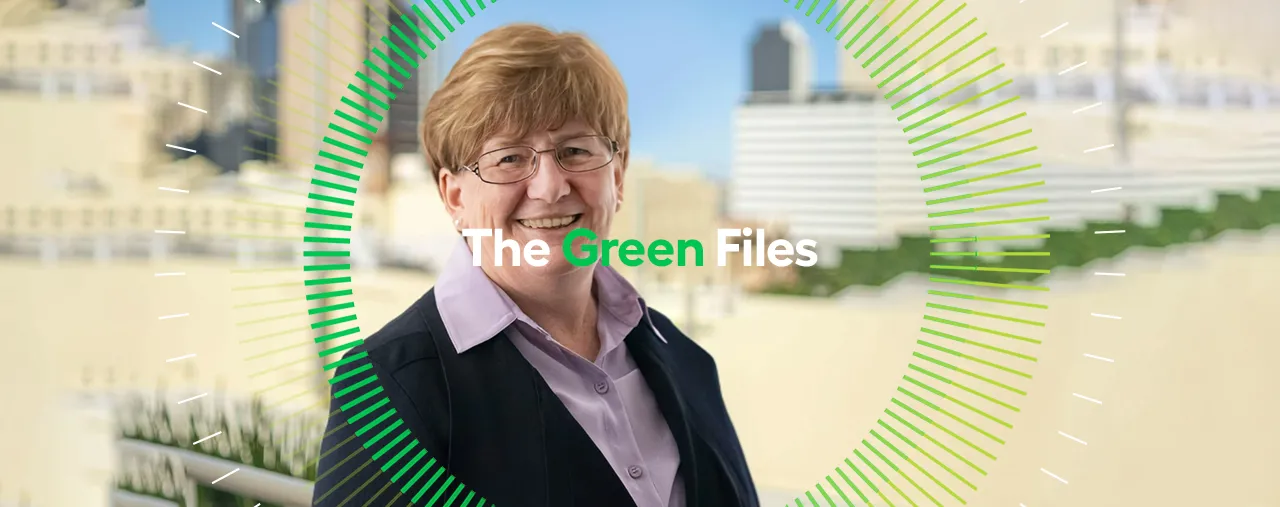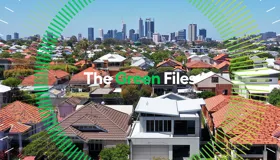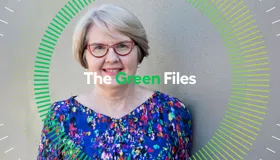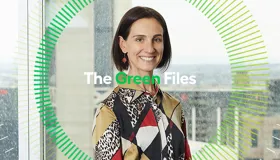
Kathy Danaher on decarbonising the world’s largest zinc producer
The Green Files is a unique CEFC series where we talk to the people making a difference in the race to net zero emissions.
27 September 2022
Kathy Danaher started her decarbonising journey in 2016 – initially as Executive Director and Chief Financial Officer of Sun Metals Corporation, where she worked to bring the company’s massive electricity bill under control. That goal changed quickly into one of decarbonising a notoriously hard-to-abate metal refining business.
Sun Metals is an Australian subsidiary of Korea Zinc Company Limited: the largest zinc, lead and sulphur producer in the world. Their Queensland-based zinc refinery is the second largest single-site user of electricity in the state.
“I was fortunate to be in on the ground floor working out the solution,” recalls Kathy. “Our first significant decision was to build a 125 MW solar farm."
At the time, there weren’t many large-scale solar farms built in Australia and definitely not one integrated into a sophisticated manufacturing metal refinery. That build presented us with lots of new challenges, but we pulled it off – and our 120 ha Townsville solar farm is still the largest consumer-owned integrated industrial solar farm in Australia and supplies 25 per cent of the refinery’s electricity needs.Kathy DanaherVice Chairwoman, Ark Energy
Ark Energy enabling net zero ambitions
“The next big step was establishing Ark Energy in late 2020, of which I was made Vice Chair. Ark Energy has the mandate of decarbonising not just Sun Metals’ energy supply, but that of the entire Korea Zinc Group and others.”
“Our first operational year in 2021, was a big one. We got our joint venture with ACCIONA up and running, with the aim of developing, building, owning and operating the largest wind farm in the Southern Hemisphere at 1.1 GW. The wind farm is due for completion in 2025."
“The year was capped off with purchasing a market leading Australian renewable development company, Epuron. The acquisition means we will develop up to the build-stage 5,860 MW of renewable projects for other large energy players. For our own ambitions, it has given us access to 4200 MW of early-stage development and an investigation pipeline of another 4,800 MW. Having access to so much renewable energy all bodes well for our decarbonisation ambitions.”
Forging progressive partnerships
Through ingenuity and persistence, Kathy and her team have found ways to overcome obstacles that have previously stood in the way of decarbonisation – making some interesting partnerships along the way.
“Every state has different challenges when it comes to implementing wind farms,” says Kathy. “Here in Queensland, it’s a big state and with farming being such a fickle business we have found a receptive ear with many cattle farmers. They like the security of regular income, that wind farms can offer them; especially when it usually occupies less than one per cent of their properties."
Kathy’s team is also in the midst of building a 1 MW plant in Townsville to produce, compress, store and dispense hydrogen.
The hydrogen will be used by one of our sister Australian logistics businesses to displace diesel in ultraheavy triple road train trucks.Kathy DanaherVice Chairwoman, Ark Energy
To support this project, the CEFC has committed up to $12.5 million to help Ark Energy finance hydrogen production, refuelling infrastructure, and five purpose-built, zero emissions ultra-heavy duty Hyzon hydrogen trucks.
Solving tomorrow’s challenges
As Kathy continues to pioneer new ways to drive the energy transition, she’s conscious of the problems that are yet to be solved. “One issue is the Rules that govern the Australian electricity market. This system worked when demand growth was easier to predict. It only grew by a few per cent each year, so it was simpler to match demand and supply over known time horizons. It doesn’t work when significant coal fire generation is offline, demand increases due to a cold La Niña weather pattern, and a war forces global gas prices to soar.”
“Another issue is transmission. Historically, most of the transmission system was built to connect large co-located coal mines with power stations connecting to our capital and regional cities. Renewable generation is far more distributed, so we need to adapt complex networks for the two-way electricity flow and efficiently install more than 10,000 km of new transmission lines through to 2050.”
Never one to shy away from a challenge, Kathy believes that, from a technical and commercial perspective, these problems are solvable.
You can see the scale, longevity and economic multipliers as an opportunity for nation building – it will definitely require innovative thinking and the right partnerships.Kathy DanaherVice Chairwoman, Ark Energy
“I thoroughly enjoy creating new relationships with people and organisations, leveraging our strengths, and using technology to make things happen. It’s a very satisfying experience solving problems as a collective; especially when you have that ‘aha!’ moment when the answer becomes clear to everyone in the room. You need to accept that you’re not going to solve it all in one meeting and it will require team resilience!”
“You also need to keep the motivation and momentum up, plus accept that things can go wrong. When that occurs, you need to regroup, create a bit of thinking space for people, and decide what’s next. It can be like a roller coaster. And I can tell you, the energy transition is going to be one hell of a ride as we all hold on.”




